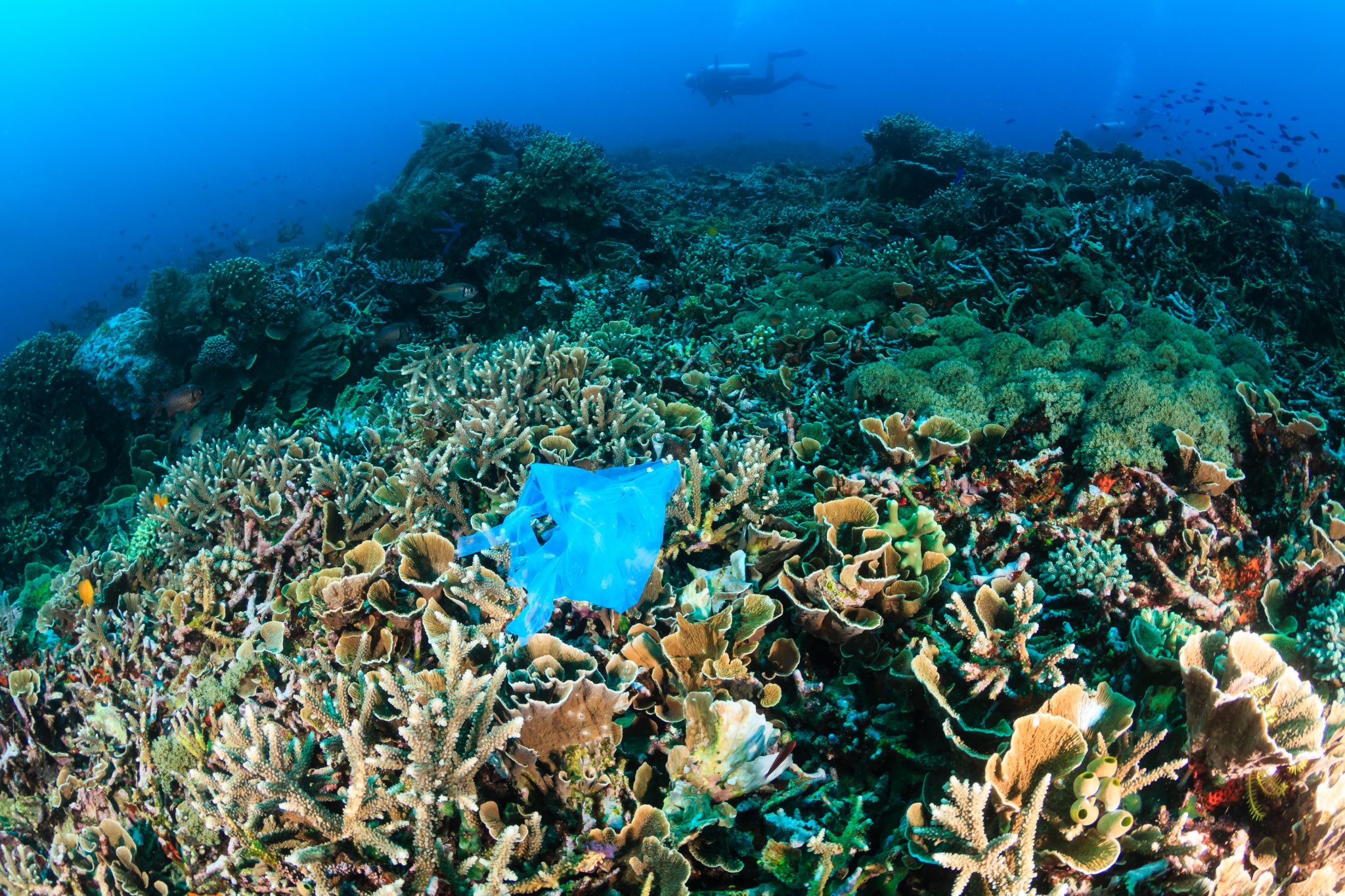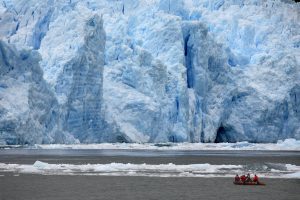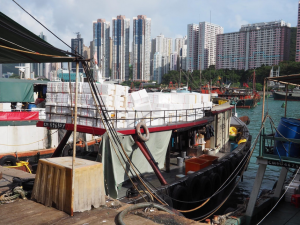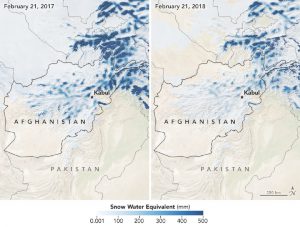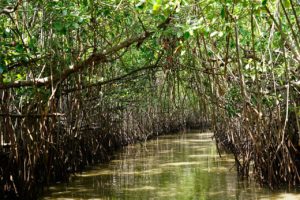The world has woken up to the multiple crises facing our global ocean, with 2017 a watershed moment in the ongoing fight to protect it, according to Peter Thompson, the United Nation’s first-ever appointed special envoy for the ocean.
Threats including climate change, plastic pollution and rampant overfishing require urgent action if the further loss of marine biodiversity is to be avoided.
“The battle is on,” said Thompson at the fifth Economist World Ocean Summit in Playa del Carmen, Mexico.
The ocean produces at least 50% of the oxygen we breathe and absorbs 25% of the carbon dioxide we emit. But it is losing the capability to regulate the climate as it warms and becomes more acidic. Illegal, unregulated and unregistered (IUU) fishing is decimating global fish stocks, which provide four billion people with 15% of their animal protein. And at current rates, it is estimated that by weight there will be more plastic than fish in the ocean by 2050.
Yet there are reasons for optimism. Latin American countries are leading the way on marine protection and cooperation. Marine protected areas (MPAs) now cover 42% of Chile’s maritime territory, and Mexico is looking to join the Tropical East Pacific Conservation Corridor, which is managed by Colombia, Panama, Ecuador and Costa Rica.
Worldwide, Thompson said, the UN’s Sustainable Development Goal 14, to conserve the ocean, has galvanised communities and mobilised resources to defend an asset upon which humanity’s survival depends.
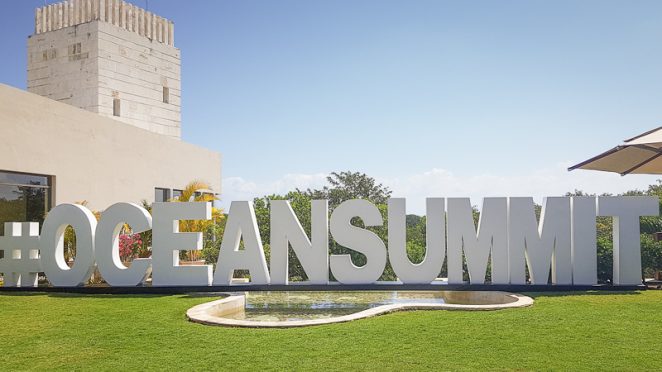
Pacific partnerships
Life above the ocean surface relies on the quality of life below it, according to José María Figueres, a former president of Costa Rica and ex-chair of the Global Ocean Commission, which first called for a specific Sustainable Development Goal on marine conservation. Along with a group of regional partners including Mexico, Chile and Canada, Figueres now participates in the Pacific Ocean Assembly protection initiative.
“There’s no other landmass that goes from the Arctic to the Antarctic. We have declared more marine reserves than any other continent,” Figueres said of the Americas.
Summit host Mexico understands the scale of the challenge, according to environment minister Rafael Pacchiano. Mexico recently announced the largest marine reserve in North America – a 150,000-square kilometre area surrounding the Rivillagigedo archipelago.
To enforce marine protection, Pacchiano said, the government is working with local communities to co-manage and advance coastal clean-up initiatives, and with the navy.
“When people discover and connect with nature, they’re more committed to protecting it,” Pacchiano said.
According to Chilean senator Ricardo Lagos, whose Valparaíso constituency includes the protected San Juan Fernández Islands and Rapa Nui (Easter Island), designating MPAs involves a political trade-off. Government must balance immediate issues, such as poverty, health and crime, with securing future resources for industry and small communities, who must be consulted on new restrictions on fishing.
Aulani Wilhelm, senior vice president for oceans at Conservation International, who led the designation of what is now the Papahānaumokuākea Marine National Monument encompassing the Hawaiian archipelago, said indigenous knowledge and communities are assets, not problems to resolve.
“The drive to protect cultural and ancestral heritage can be as strong as the environmental imperative,” said Wilhelm.

International goals
Sustainable Development Goal 14 includes a commitment to conserve 30% of the ocean by 2030, but countries are far from making this a reality, Figueres told chinadialogue ocean.
“Technological advances are allowing us to move forward in this direction,” said Figueres, pointing to satellites, drones, and the work of the International Maritime Organisation in fitting smaller boats with transponders to provide tracking data.
Furthermore, the Food and Agriculture Organisation’s Port State Measures Agreement, which entered into force in 2017, commits to eliminate IUU fishing. It has 51 signatories so far although China is not party to the agreement. The next step is to give it “teeth” and enhance the capability of countries to comply with it, Figueres said.
The FAO estimates that IUU fishing is worth around US$23 billion per year. It is a major problem across national jurisdictions.
Small countries like Uruguay struggle to find the resources to protect against IUU fishing and must work closely with regional partners, said Eneida de León, the country’s minister of housing, territorial ordering and environment.
“The use of the ocean’s natural resources has become abusive,” de León told chinadialogue ocean.
$23 billion
The value of illegal, unregulated, and unreported fishing, estimated by the FAO
The issue of marine resource extraction has complicated an otherwise cooperative relationship between Uruguay and neighbouring Argentina, de León said.
Conservationists claim the construction of a Chinese-backed fishing port in Uruguayan capital Montevideo would enable China’s long-distance fishing fleets – the largest in the world – to offload catch and refuel, prolonging overfishing in South Atlantic waters.
De León said Uruguay has a bilateral treaty with Argentina on the ocean and doubted their current “very good” relations would be soured by the proposed port.
“If it complies with the logical environmental conditions, and fundamentally, the protection of resources, then I don’t think we’re going to have any problems,” she said.
Blue economy
There is nothing more perverse in an age of austerity than subsidies, according to Figueres, who highlighted the US$30 billion in annual subsidies that go to the fishing industry, mostly for fuel.
The G20 group of economies has a long-standing yet unresolved commitment to eliminate fossil fuel subsidies. At the recent meeting of the World Trade Organization (WTO) in Buenos Aires, Argentina, minsters made little progress on the issue.
India blocked a resolution on fishing subsidies in Buenos Aires, claiming that without them, poor fishermen would be hurt most. However, around 80% of India’s US$400 million annual subsidies go to industrial trawlers.
Pavan Sukhdev, an economist and president of WWF International, also advocated eliminating fishing subsidies.
The destruction of reefs, mangroves and other marine ecosystems is expected to have economic impacts, as the fisheries and eco-tourism sectors are hit. These ecosystems also protect against extreme weather events.
If these risks can be calculated, then they can be insured against. Insurance is becoming a big idea in shaping the blue economy, according to Rowan Douglas, head of capital science and policy practice at insurer Willis Towers Watson.
“Surely, we can provide insurance-related finance for conditions that require greater harmony with related ecosystems,” Douglas said.
Working with China
China is the world’s most significant single source of ocean impacts. Beyond having the world’s largest fishing fleet, China consumes, processes and exports more fish than any other country. China is also a major source of ocean pollution, from fertiliser run-off to plastics and chemical contamination.
UN officials insist they are working with Chinese partners on issues affecting the ocean, despite them not having a presence at the Mexico Ocean Summit.
Lisa Emilia Svensson, director for ocean at the UN Environment Programme (UNEP), said her team engage with the China Council for International Cooperation on Environment and Development, which has a special workforce dedicated to tackling marine pollution.
The UN’s conference of the parties to the convention on biodiversity (COP17) will be held in China in 2020 – the same year countries must meet international MPA targets.
“I would like to see strong commitments from China to include the marine environment in an updated agenda for 2030,” said Svensson.
Plastic pollution
Every year, eight million tonnes of plastic is dumped into the ocean, with China accounting for 28% of the total. Svensson said China can lead on tackling plastic pollution as it has in other areas of environmental protection.
“We need China to take global leadership. We have seen China stepping up in the climate change discussion, taking the initiative to stop ivory, and on stopping importing plastic waste from developed countries,” she said.
Svensson added that efforts to make the plastics industry more sustainable should focus on a lifecycle or “circular economy” approach. This involves keeping resources for as long as possible, extracting the maximum value and use from them, then recovering and regenerating them.
Fernando Musa, CEO of Brazilian petrochemical company Braskem, which manufactures polymers, said companies are looking at product designs with recyclability in mind. However, he identified better waste management as the solution.
Emily Woglom, executive vice president of the Ocean Conservancy, also emphasised the need for better collection because 75% of plastic that ends up in the ocean is never collected in the first place.
Few of the threats to our oceans have captured the public attention as much as plastic pollution. Svensson attributes this growing consciousness to collaboration between individuals, governments, the private sector, non-government actors, media and scientists – and their powerful images and storytelling.
“That’s how you can drive a global change,” she said.
